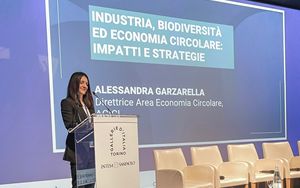(Finance) – Over a million animal species at risk and 75% of emerged lands and marine environments transformed: these are the most evident symptoms of the loss of biodiversity, a process that has profoundly transformed the ecosystem in recent decades. To combat the phenomenon, a system strategy based on circular economy actions appears increasingly necessary, to be applied to the sectors that most impact the ecosystem, such as agri-food, transport, energy and construction. This is what emerged today at workshop “Circular economy and biodiversity protection: strategies for a global challenge” organized by the Alliance for the Circular Economy.
A thematic study starting from report “Industry, biodiversity and circular economy. Impacts of economic activities on biodiversity and possible mitigation solutions” realized by AGICI to highlight the impact of human activities on the loss of biodiversity and the consequent role of the circular economy in protecting the latter. The report identifies the six economic sectors that have the greatest impact on the ecosystem: first of all food, followed by the infrastructure and transport sector, finishing with clothing and energy. Yet – the report underlines – what makes the protection of biodiversity urgent is precisely the role it plays for the economy. The generation of value in fact depends on the richness of natural resources, as is evident in the food sector, where land degradation has generated a 23% reduction in agricultural production capacity.
For reduce the impact on the ecosystem, there are different strategies that each company, based on its positioning along the supply chain, can implement: from regenerative agriculture, to mechanical and chemical recycling up to the selection of recyclable or compostable packaging, which minimizes the production of new waste, extending its life cycle. A theme, the latter, dear above all to textile industry, whose clothing production in Europe in 2020 required on average the consumption of 391 kg/person of raw materials, combined with significant water consumption. Among the solutions identified for the sector is the design of new textile fibres, capable of lasting longer over time, of being recycled and therefore sustainable by design.
To therefore limit thethe impact of anthropogenic activities on biodiversity, concludes the report, it is necessary to rethink the design of goods, services and infrastructures so that it is possible to estimate in advance the effects on the environment throughout their life cycle. Regenerative agriculture, reuse and recycling, measurement tools and material design are the main circular economy strategies that the different sectors, transversally, can implement to preserve the integrity of ecosystems, while generating an economic return for the community .
“The loss of biodiversity is a process whose effects have been largely underestimated in the past, thus allowing it to quickly become an urgent and no longer negligible problem from a threat – he declared Alessandra Garzarella, Director of the Circular Economy Area of AGICI –. With this report, we wanted to highlight the potential of circular economy practices to reduce impacts on nature, various and diversified depending on the economic sectors considered but linked to a single imperative, that of developing a system approach that involves everyone, from institutions to companies, from associations to interest groups”.
